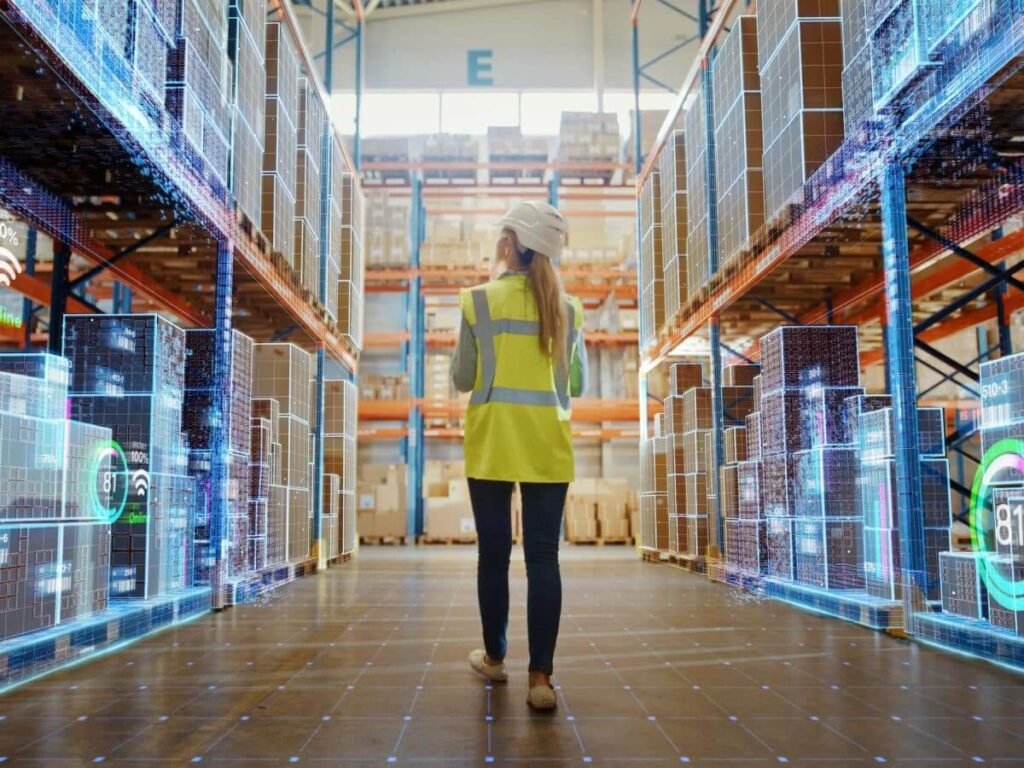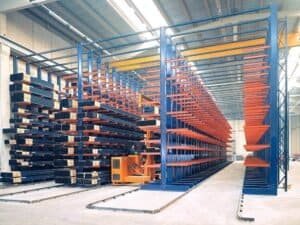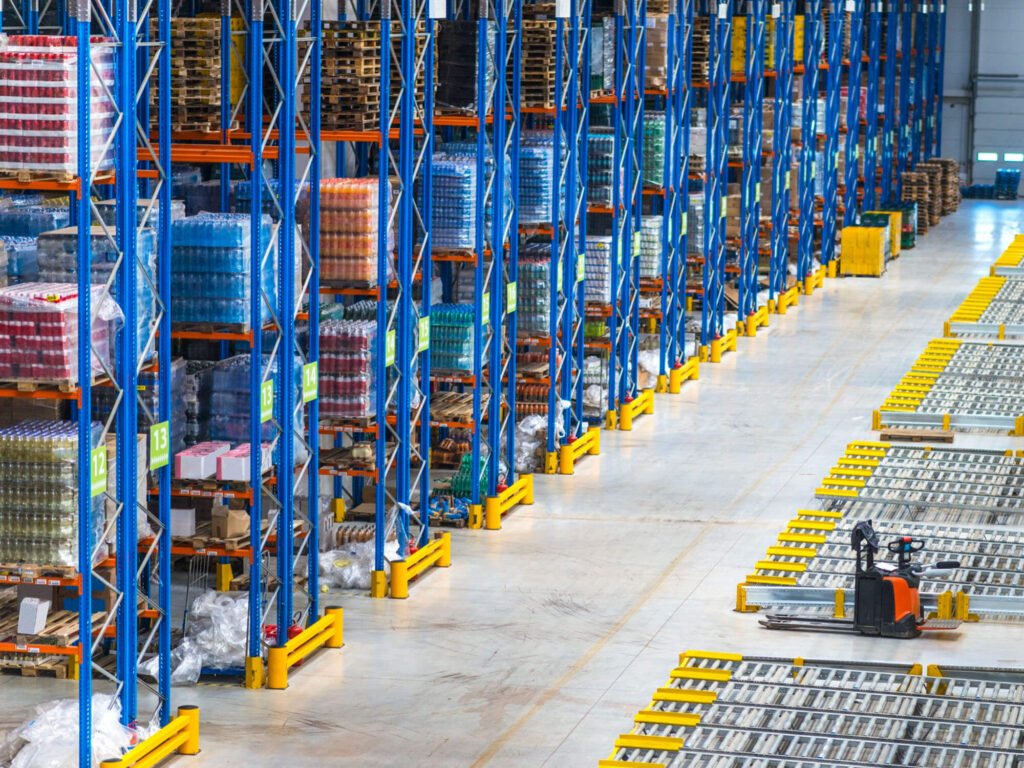Today, managing a warehouse goes beyond organising and stacking shelves. It involves optimised speed, accuracy, and cost efficiency. Manual systems, however, often cause delays, errors, and inefficient use of space. So, this is where warehouse automation makes a difference.
In 2025, emerging technologies like AI, robotics, and data-driven systems will upgrade the warehouses. Therefore, if your biggest challenge is slow order, then you are on the right blog. In this blog, we will discuss Warehouse Automation Trends that will improve workflows and efficiency. So, keep reading!
1) Why Warehouse Automation Matters More Than Ever
As a warehouse owner, you must know how fast things are nowadays. Quick deliveries are a must, and even the slightest delays can result in losses. And, warehouse automation steps in to help in these scenarios.
With automated systems, workflows are completed at a higher speed, and automated pick, transportation, and packing of items make order processing and shipping seamless. Well, operational delays will be a thing of the past.
Moreover, real-time tracking of inventory adds to the benefits. You will always know what is and what is not in stock. Sp, this streamlined process makes inventory management more efficient.
Well, cost is automation’s greatest advantage. It can appear pricey initially, but in the long term, it actually reduces costs. You know, there is a drop in the number of employees needed for repetitive processes and a reduction in the number of errors that need to be corrected.
We can say that with automation, the safety of your employees is well taken care of. Workers can perform more skilled and safer tasks while the suffocating and dangerous work is done by machines. Great! Okay, now let’s discuss how you can upgrade your warehouse with top trends in 2025.
2) Top Warehouse Automation Trends in 2025
Automation of warehouse is rapidly evolving. If you are in charge of a warehouse or are planning to work on one, it is essential to know what new things are on the horizon. Here, in 2025, are the key things that are expected to transform warehousing. Each of the trends has its own distinct ways to enhance automation, from AI to robotics and even eco-friendly options, driving speed and lowering costs, thus remaining on par with the competitors.
i) AI and Machine Learning in Smart Warehousing
AI is no longer a new concept. By 2025, we expect it to be integrated into a multitude of automated warehouse systems. Yes, AI can optimise warehouse automation because it can learn from the data provided, make intelligent decisions, and continue to improve on its own.
Good to hear that it analyses historical data on sales patterns and predicts the stock you will need in the future. Apart from this, this ensures you’re always ready, mitigates operational holdups, and prevents excess stock from accumulating. And, you are able to cut down inventory expenses and enhance customer satisfaction, as stockouts will be less frequent.
In addition, the improvement in dynamic slotting due to machine learning also streamlines warehouse operations. This ensures that the most frequently sold items are positioned near the packing area. It reduces the amount of walking and accelerates the picking process. AI optimises real-time placement based on order frequency, product dimensions, and weight.
Moreover, AI has proven useful in intelligent routing as well. It provides direction to both machines and human workers to the most efficient warehouse exit. That reduces the number of steps, time required, and accelerates delivery.
AI works the same for small and large warehouses as it continuously optimises the routes to eliminate congestion, lower power consumption, and enhance picking.
ii) Robotics and Automated Picking Solutions
Okay, modern warehouses are now integrating robotics into their operations. It is expected that there will be automated warehouses capable of picking, packing, sorting, and transporting goods in the near future. You will see robotic arms integrated into the packing lines and Autonomous Mobile Robots (AMRs) transporting goods over long aisles.
Well, automated storage and retrieval (AS/RS) systems manage vertical storage racking areas and eliminate the need for forklifts. And, these systems save physical space and lower the amount of manpower needed. Ultimately, it reduces the amount of human error that occurs when storing and retrieving items.
- Cobots (collaborative robots) assist human operators as they work. They handle the most tedious and physically draining jobs while allowing your staff to carry out more delicate and value-added tasks.
Because these bots are tailored to specific tasks, they can be easily reprogrammed to adapt to different workflows; thus, they are very useful for warehouses that operate on fluctuating inventories and seasonal demand. Well, robots are easily trainable, and with smarter software, warehouse robots will be more flexible and smarter in 2025.
iii) The Growth of Warehouse Management Software (WMS)
Even the best machines can’t run smoothly without an effective system to operate them. For this reason, warehouse management software will be receiving significant updates in 2025.
Today’s trends for WMS systems are centred around cloud systems that are user friendly, quick to implement updates, and intelligent. A cloud-based warehouse system allows real-time data access from any location, including tablets and smartphones, which is convenient for busy managers.
Modern WMS systems now integrate with ERPs, CRMs, and IoT devices. This combination results in integrated, seamless operation across;
- All sales
- Inventory
- Picking
- Packing
- Shipping
- delivery processes, etc.
Tasks such as order fulfilment, inventory count, and restock notifications can be automated. This not only diminishes repetitive manual tasks but also reduces costly human error.
Moreover, speed and precision can be enhanced using barcode scanners and RFID. You know reports are created automatically. Therefore, it is easy to track progress and identify areas of improvement.
Most importantly, intelligent WMS systems provide valuable insights based on data. Notifications for delays, overstock, and picking errors can alert system users, enabling swift corrective action. So, this improves warehouse accuracy, productivity, and post-automation ease of management.
iv) Internet of Things (IoT) for Real-Time Inventory Control
IoT systems change warehousing from static to dynamic. Yes, in 2025, cutting-edge sensors and tracking devices will enable unprecedented control over stock management. Moreover, with IoT, every item, shelf, or pallet in the warehouse can be tracked in real-time. And, tools like RFID tags allow for precise location tracking without the need for manual scanning.
With IoT, any prospective issues can also be monitored and dealt with proactively. For instance, the sensors monitoring freezers can notify operators before the food items spoil if the freezers fail.
In addition, goods can also be monitored for quality control purposes, such as temperature and humidity. This is particularly useful in the storage of food, medicine, and other sensitive items.
With IoT, monitoring energy and equipment effectiveness can further result in lower operational costs. This is a cleaner and more efficient way of managing a warehouse’s inventory.
v) Voice Picking and Wearable Tech for Productivity
Every second can count in a warehouse, and that is a reason to use the fast-growing voice-picking technology. Voice pick allows users to pick items while receiving verbal instructions. Headsets are used, making it unnecessary to hold papers and screens, enhancing efficiency, safety, and lowering operational risks.
In addition, smart glasses, glove and wrist scanners, and AR displays are included in wearable warehouse tech. These allow real-time assistance and keep the worker’s hands free.
The application of AR in logistics allows seamless highlighting of the designated bin, the sequential task, or even checking product details without breaking the flow. All these functions streamline training, enhance picking efficiency, and minimise errors. This transforms the team into a more confident and faster unit.
Additionally, the use of hands-free technologies allows the workforce to concentrate more and work to lessen their physical strain. This fosters a more productive environment but also promotes safety and better workflow. All these contribute to better employee satisfaction and lower turnover in the long run.
vi) Sustainable Warehouse Automation Technologies
The green movement is a growing trend in warehouses. In 2025, sustainable automation has become the focal point. Companies are aiming to conserve resources, minimise waste, and adhere to ecological guidelines.
The use of low-power, yet highly productive robots is a step in the right direction. Such devices boost efficiency while lowering energy costs.
More warehouses are also adopting green logistics by using recycled materials, eco-friendly packaging, and optimising trucking routes to minimise fuel consumption. Some go even further, using solar panels, LED lighting, and other smart energy systems to reduce their carbon footprint.
Apart from this, others install smart climate controls to minimise heating and cooling system usage or use rainwater to cool systems. From a long-term perspective, green technologies like green tech aid your business while being beneficial for the earth. Enhanced sustainability improves image perception, lowers costs, and fosters compliance.
vii) Autonomous Vehicles and Drones for Internal Transport
Transporting items within a large warehouse can be laborious. That is the reason why many companies have started using drones and autonomous vehicles for logistics.
- AGVs (Automated Guided Vehicles) are a type of autonomous vehicle that transports goods along fixed routes without human aid. They can operate 24/7 and do not require rest, making them ideal for high-volume logistics.
- Logistics drones are useful for high-shelf and inventory scans. They are able to collect the necessary data and send it to the system, significantly lowering manual efforts while enhancing precision.
These vehicles have autonomous self-optimisation of the routes. They can adapt dynamically to layout changes, peak-load slams, or even emergency high-volume requests without operational slowdowns.
viii) Integration of Digital Twins and Simulations
A digital twin of your warehouse is a digital version that mirrors physical operations. A digital twin lives inside a computer but functions like the real-world warehouse. With it, you can test changes before doing anything in the actual warehouse. Considering adding new shelves or changing the layout? Do it in the twin first.
Additionally, with warehouse simulation tools, you can assess the performance of your space once changes are implemented. You may evaluate the movement of robots, the flow of stock, or even the scheduling of shifts.
This is one of the fastest-growing trends because of the time it saves, the mistakes it reduces, and the enhanced safety it provides. The practice of smart warehouse planning with digital twins is becoming the norm.
This is a stronger indication of where warehousing is expected to be by the end of 2025. Everything from smart software to green technology is aimed at increasing efficiency, safety, and overall operations. So, there is an urgent need to strategise, understand, and implement automation if leaders intend to maintain a competitive edge.
3) Challenges in Adopting Warehouse Automation Technologies
Despite the proven outcomes, the initial phases can be challenging. Here are a few automation in warehouse challenges you may encounter.
! Significant initial investment costs: Purchasing automation systems, software, and tools incurs high costs. This poses a significant challenge for small to medium-sized warehouses.
! Integration problems with older technologies: Many warehouses still rely on legacy software or older equipment. These systems often cannot communicate with modern automation technologies, increasing the complexity of the setup.
! Training and education gaps: Automation systems require trained personnel with an understanding of modern technology. You know, without proper training, there will be issues performing new tasks with new technology.
! Indefinite ROI period: There is a period of time before the benefits of automation are fully realised. During this period of time, the automation may be questioned, and the ROI will be uncertain.
! Change aversion: There may be employees who are used to manual processes and may be resistant to transitioning to new automated systems. These employees should be engaged early, and their perspective should be shared.
! Maintenance and technical assistance: Automated technologies require constant updating, repairing, and system checks. Without adequate and timely assistance, automation issues can cause lengthy delays.
Everyone faces these barriers to adopting automation. With proper strategies and assistance, issues surrounding automation can be resolved, making the warehouse more efficient.
4) How to Prepare for the Future of Automated Warehousing
Preparing for automation doesn’t need to be an anxiety-inducing process. If you put proper strategies in place, you can achieve great results in a streamlined, step-by-step manner. To assist in formulating a robust automation plan for 2025, consider the following:
- Evaluate your current operations and objectives
Taking a thoughtful review of your warehouse operations can go a long way. Which processes are blocking you? Which processes are the biggest error-prone? Addressing these issues will help in selecting the correct automation solutions and predicting the ROI. This step is necessary if you’re anticipating the future of warehouse automation.
- Begin with easily implementable and scalable solutions
Automation doesn’t need to be an all-or-nothing approach. A good approach includes starting with basic tools, such as barcode scanners, WMS, and voice picking technologies.
These technologies are easy to deploy and can unlock fast ROI. As you achieve a good level of automation, you can bring in more advanced tools. This approach to automating the warehouse mitigates stress.
- Prepare your workforce for the change
Just like training automation tools, your workforce is equally participant for the overall outcome. Provide training and guidance for the automation tools to build their confidence. Trust promotes fewer mistakes and, in turn, helps in a smoother transition to automation.
- Set defined objectives and monitor milestones
Whatever your objectives are—enhanced order picking, increased accuracy, reduced costs—know what success looks like and measure your operational KPIs to improve them step by step.
The future might hold warehouse automation advancements, and smarter moves coupled with plans to make will get you prepared.
5) Conclusion: Embrace the Future with Smart Warehouse Automation
Alright! The future of automation lies with smart tech—AI, robotics, real-time tracking, and even green tech. Embracing new trends will enable you to improve speed, lower operational costs, and remain competitive. So, invest in automation and employee training, start with the basics, and ensure systems designed to scale are prioritised.
Okay, and when you’re ready to elevate your racking setup, Iracking is here for you. We offer a seamless transition, flexible and efficient racking systems designed to support your automation journey. Automate your warehouse today and stay prepared for future advancements and changes. Get in touch with Lracking now! Good luck!




